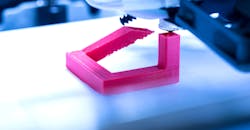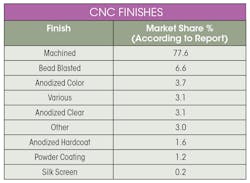In our previous coverage of 3D Hubs’ Digital Manufacturing Trends Q2/2018 report, we talked about the top-ranked 3D printers. However, the company kept tabs on more than just printers. By tracking all data on its platform, 3D Hubs has helped shine a light on the state of 3D printing itself. While powder bed technology is poised to grow, currently extruding standard black PLA is dominating this one online platform.
Process and Materials
Fused deposition modeling (FDM) or fused filament fabrication (FFF) covers 68% market share of 3D Hubs’ business. It may be the case that extruding plastic is still the most affordable way to get the first prototype in your hands. FDM saw a marginal increase of 2% while SLA and DLP maintained a 15% share at #2. SLS is at #3 and saw an increase in popularity with a small 1% bump to 13%. SLS is continuing its chase of SLA + DLP, and the gap may close even further as we see SLS dominate the most popular industrial technologies.
FDM is an extruded polymer process that captures a lot of the market due to its cost-effectiveness and ease of use, and it is arguably the most accessible. While the costs are reduced on other processes, many of the other processes presented here require a space just for the process. Even for desktop SLA 3D printers, there is still a concern of the materials age and exposure to light.
With extruded plastic covering the process, it makes no surprise that plastics comprise the top 10 materials. Standard PLA comes in at No. 1 with a drop of 4% since Q1, with 30% of the material pie. Standard ABS at No. 2 increases to 17%. The race between SLA/DLP and SLS continues on a material level as PA 12 (the most popular SLS material) with 12% has overtaken Standard Resin (the most popular SLA/DLP material), with 8%. That being said, Transparent and Tough Resin—both SLA/DLP materials—have entered the list for the first time (at Nos. 8 and 9, respectively).
Color
Extruded plastic is commonly used for prototypes to determine form and fit. While the data doesn’t explain what the parts are used for, it does show that color may not matter. 40% of the market is using black filament, while 20% is using white. Perhaps this indicates that color doesn’t matter because parts are for form and fit applications, or that parts are used in a location where they’re not seen.
Having data is good, but interpreting it correctly may be more important. The report shows that 36.8% of production is in the U.S. This data might simply indicate that 3D Hubs started in the U.S. and has more local connections. With some other countries pushing for 3D printing manufacturing, we can only say this is accurate for 3D Hubs.
To gain an accurate picture, we need more companies to track and share data. This can be difficult as companies like to hold information close to their chest. As 3D printing grows and the Industrial Internet of Things incorporates more artificial intelligence and machine learning, having access to larger data sets, while allowing companies to maintain ownership of the data used, will be increasingly important in big data analytics.
Most finishes, other than machined, offer corrosion protection. This might indicate that the customer didn’t care about the look of the finish and more about the environment the part was used in. More information is needed before an accurate conclusion can be made. However, as more companies pool data, company leaders will be able to make better decisions, just as artificial intelligence will need big data to operate effectively.
3D Printing and CNC
While 3D printing is disrupting traditional technology, it isn’t replacing it. Anytime a machine is sitting idle, it is costing a company money—or it is at least missing out on generating more revenue. The same concept to keep 3D printers running has expanded to computer numeric controlled (CNC) machines. The data from the report is that Aluminum 6061 takes 56.2% of the production.
With companies like Desktop Metal, GE Additive, HP, and eos growing their metal powder-bed processes, we may have a sign as to which powdered metals will be most valuable. The shift might be less in materials, but more in billets to powder as the powder-bed market grows.
The CNC finishes customers asked for might confirm the same idea in the lack of color in the 3D printed materials. A machined finish was the most requested finish at 77.6% with an average surface roughness (Ra) of 3.2 μm that might indicate looks don’t matter for the applications customers are using 3D Hubs services. On specification surface finish requirements can be increased to 1.6, 0.8, and 0.4 μm. This finish comes at no added cost, and the tightest dimensional tolerances making it a favorite for most projects.
Bead blasting holds its spot at No. 2, decreasing its popularity 0.9%. Used mainly for visual purposes, bead blasting is a manual process and removes the tool marks on the part. Anodized color jumps from #6 to round out the top 3 with 3.1%, a decorative anodizing that gives parts a smooth, aesthetically pleasing surface with some corrosion resistance.
As the world becomes more connected, it also becomes more decentralized. Paying attention to the data might help spot trends before they form and keep companies on the leading edge. Companies that take advantage of connectivity, 3D printing technology, and collaboration will have more flexibility and adapt to the market faster.
From this one data set from 3D Hubs, we might be able to determine a trend that companies using online services don’t care too much about color or fine surface finishes. As more companies pool data, we might find what these parts are used for and what machines are making them. And we may gain a better big picture of what’s happening on these new online prototyping/manufacturing platforms.
Get more with Machine Design’s guide for Buying 3D Printers.




